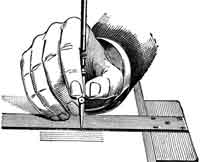Cations are atoms that contain a positive charge, and they are formed when the atoms lose electrons which are negatively charged. This is the typical behavior for many metal substances. And because of this behavior, metals have a general tendency to form into cations.
Under normal conditions, metal substances are attracted to the cathode. As they move towards the cathode, there is a great chance that electrons will be lost. Â With this occurrence, metals will form into cations. Â On the other hand, meanwhile, non-metallic substances will have the tendency to travel towards the anode pole and gain electrons in the process. Â This will then result in the formation of anions by non-metallic substances.
In terms of the number of valence electrons which are situated on the outer parts of the atom, metallic substances have less of these outside particles when compared to non-metal substances. Â And the fewer the number of valence electrons there are, the greater the tendency for the metal substance to lose an electron. Â Like in the case of normal particle movement within a metallic substance, particles are said to improve their stability and electronegativity. Â But the amount of ionization energy in metal substances is much lower than the force required for electron removal. Â Because of this difference in ionization energy, metals will then be more likely to lose electrons as they move towards the cathode. Â And with electrons lost, metals will then form into cations or positively charged particles. Â The opposite case happens with non-metals since they have higher electronegativity and ionization energy.
Because of this cation-forming tendency, metals will also have high compatibility with other chemical substances like halogens. Â Halogens are known to be highly electronegative but can easily bond with cations from metals. Â With the difference in charges, a positive charge for the metallic cations and the halogen’s negative charge, the ionic bond between them is considered very strong.











Leave a Reply